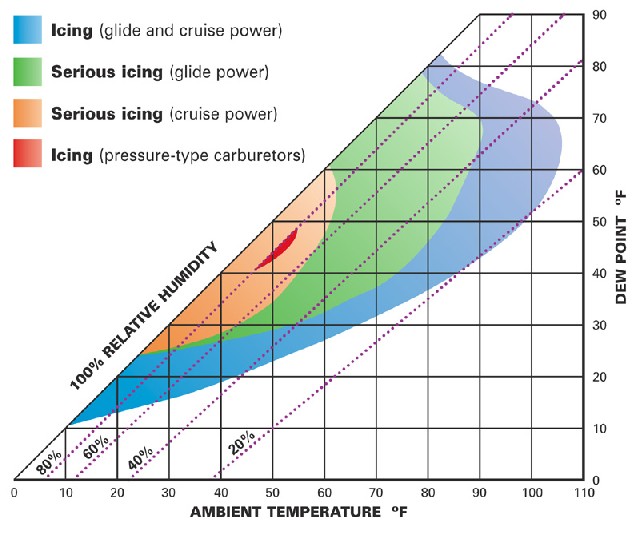Carburetor what?
NYC02FA025
Just because you're flying in the clear doesn't guarantee safety from icing, at least carburetor icing. On November 11, 2001 the pilot of a Piper Cherokee was killed and his passenger seriously injured during a night forced landing after losing engine power.
About three hours into the until-then uneventful night flight, the pilot contacted Mansfield, OH approach control, told them that he was experiencing a partial power loss, and requested to land at Mansfield. Mansfield runway 32 was straight ahead and four miles, and the pilot was cleared to land. According to the passenger, the pilot applied carburetor heat for about ten seconds, and with no change in engine operation, returned it to cold and said that he thought they were experiencing vapor lock. Shortly thereafter, the pilot informed Mansfield approach that he was going to land on a road, and that the engine had quit.
Investigation revealed that as the flight progressed, the temperature and dew point spreads were getting closer together. At the time of the accident, the temperature in Mansfield was minus one degree Celsius (30.2 F) and the dew point was minus four degrees Celsius (24.8 F).

The NTSB determined the cause of this accident to be the pilot's improper use of carburetor heat, and subsequent forced landing.
The pilot might have been able to prevent this accident had he taken advantage of the free advice in the ASI Aircraft Icing Safety Advisor. It says, "At the first indication of carburetor ice, apply full carburetor heat and LEAVE IT ON. The engine may run rougher as the ice melts and goes through it, but it will smooth out again."
A check of a carburetor icing probability chart shows that the temperature and dew point at the time of the accident favored serious carburetor icing.
For more information about carburetor icing, see Flying Smart from the February 1995 issue of Flight Training magazine.
This accident report as well as others can be found in ASI's Online Database.